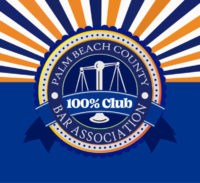Company Puts Profits Over Safety – Known Defective Seat Belt
Jane Doe, a beautiful young woman, was traveling in an SUV across Alligator Alley on her way to Naples. Jane Doe, who was wearing her seat belt, suddenly lost control the vehicle which led to her SUV rolling over several times.
Jane Doe was ejected from the vehicle through the driver’s side window. She was TraumaHawked to the closest trauma center and was placed on a ventilator where she remained in a coma for two weeks. As a result of the ejection, Jane Doe suffered multiple severe and permanent injuries, including facial, brain, and spinal damage. Today she is still undergoing reconstructive surgeries, endures intense pain, has hearing loss, and suffers from double vision.
The National Car Company had extensive knowledge of the defects not only from their own testing which failed, but also from its own customers and their warranty centers. The National Car Company used a defective seatbelt in Jane Doe’s SUV, called a Gen III Buckle; which their own internal testing showed was defective. These buckles were known for Inadvertent Release – release from inadvertent contact and also from Inertial Release ? unlatching during crashes and rollovers when the release button or back of the buckle hits any part of the car or a person. As early as 2003, Public Citizen, a public consumer advocacy group, and Clarence Ditlow, head of the Center for Auto Safety, agreed that these buckles were patently unsafe and should be recalled immediately and began pressuring The National Car Company to take action to improve their vehicles safety? which was more than 14 million automobiles. The Center for Auto Safety stated in terms of seat belt design, this is the worst they have ever seen. The problem with seat belt accidents like Jane Doe’s is that the failure isn’t always obvious after a crash and it can often appear that the occupant wasn’t wearing a seat belt.
Also at issue was the vehicle’s poor design and use of tempered glass in the side windows which greatly increases a consumer’s chance of being ejected from the vehicle in an accident or rollover, as in Jane Doe’s case. In the 1950’s, The National Car Company used laminated glass in the majority of its vehicle’s windows and had tested a similar SUV with side laminated glass which has been proven to save lives and keep occupants in the vehicle.
The National Car Company was also negligent in failing to properly test their vehicles to determine occupant reactions in a rollover. They did not test to determine inertial forces acting on the buckle, they did no “ball testing” to simulate an elbow strike, and they did not test to determine kinematics during a rollover. They also failed to warn consumers or recall its vehicles despite more than 288 CAIRS, 11,433 warranty complaints, 30 lawsuits and extensive failed test results.
Attorney Scott C. Murray settled the case for a confidential amount that will help offset his medical expenses, pain and suffering and loss of earnings.











